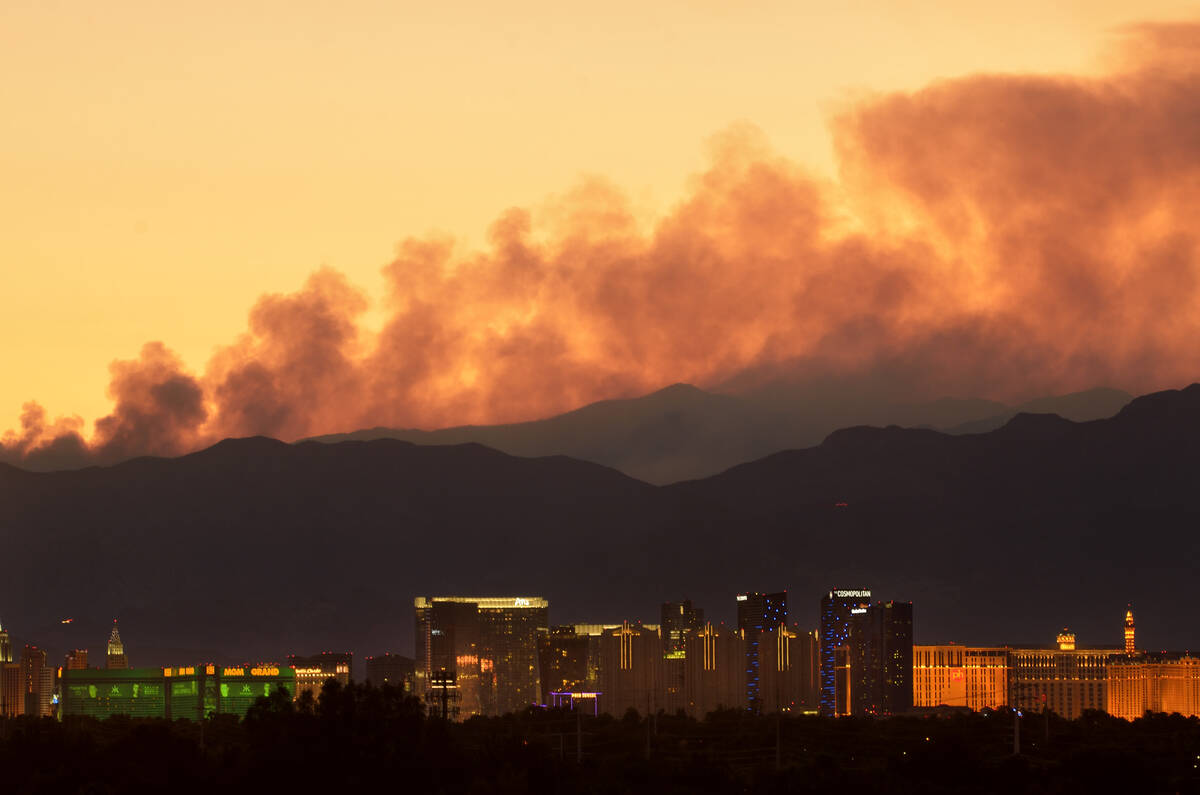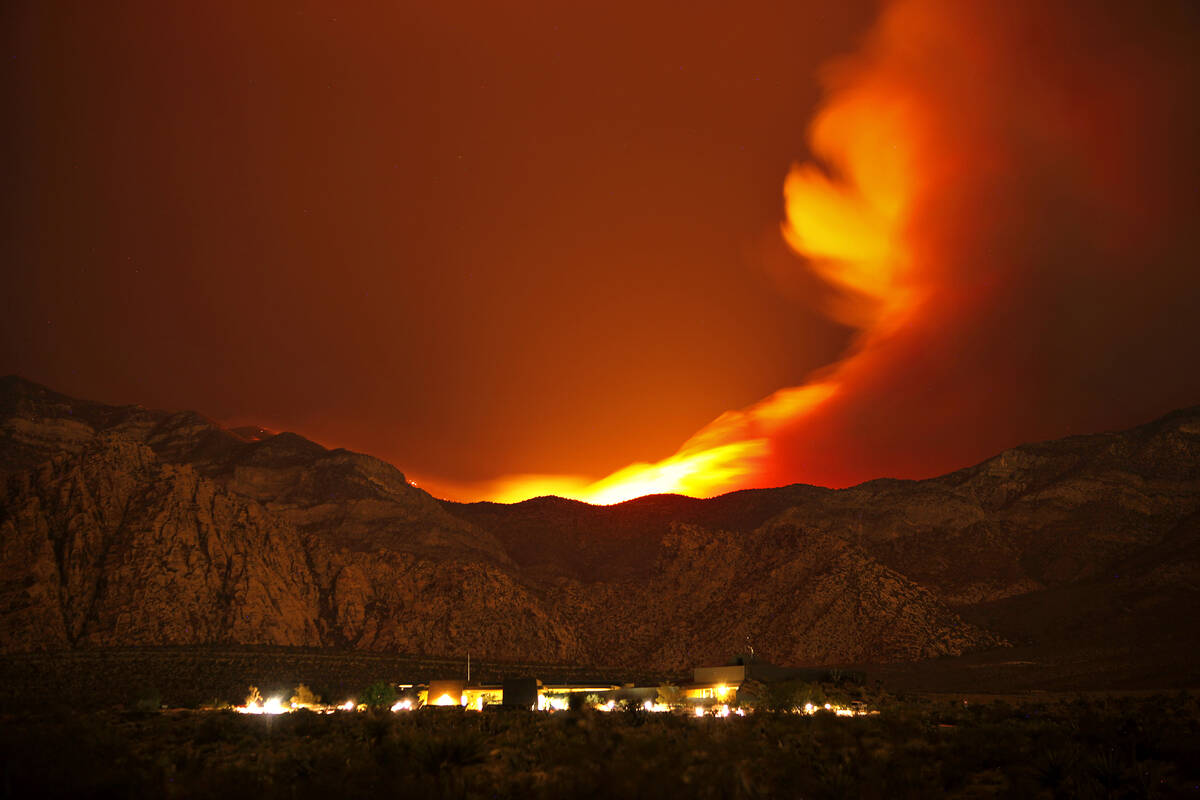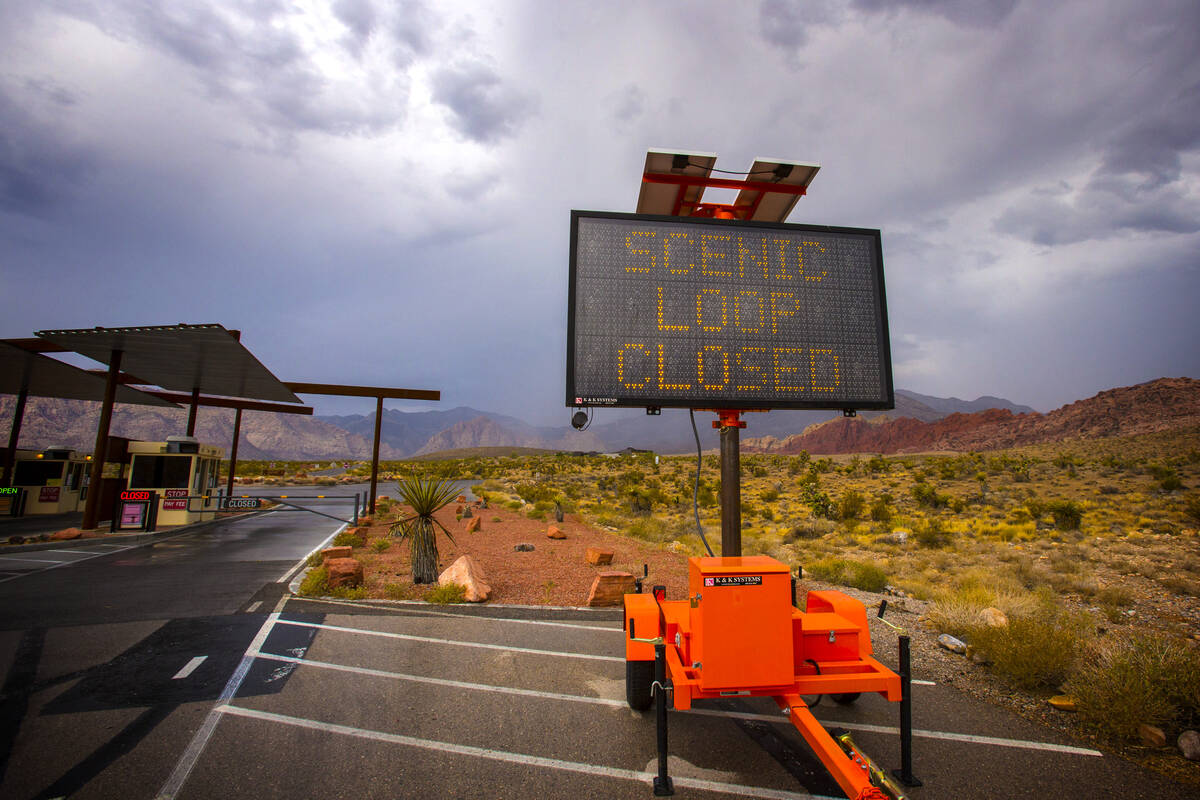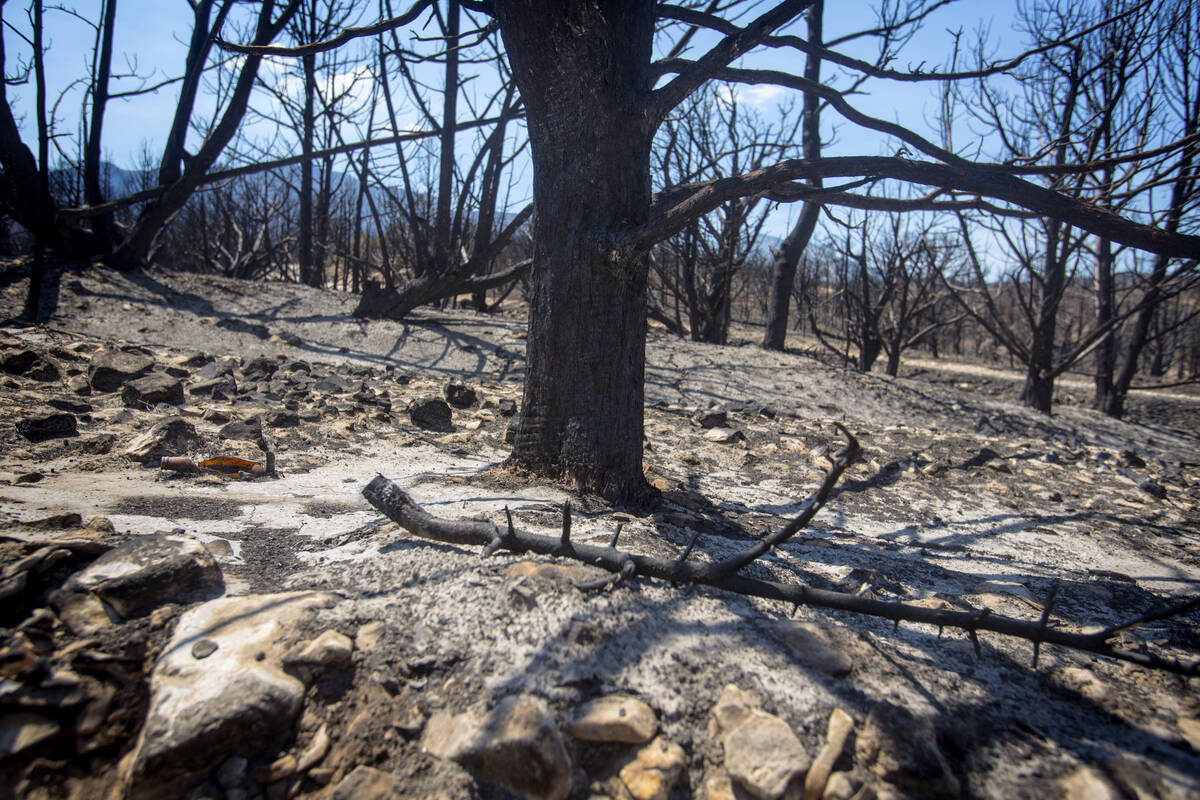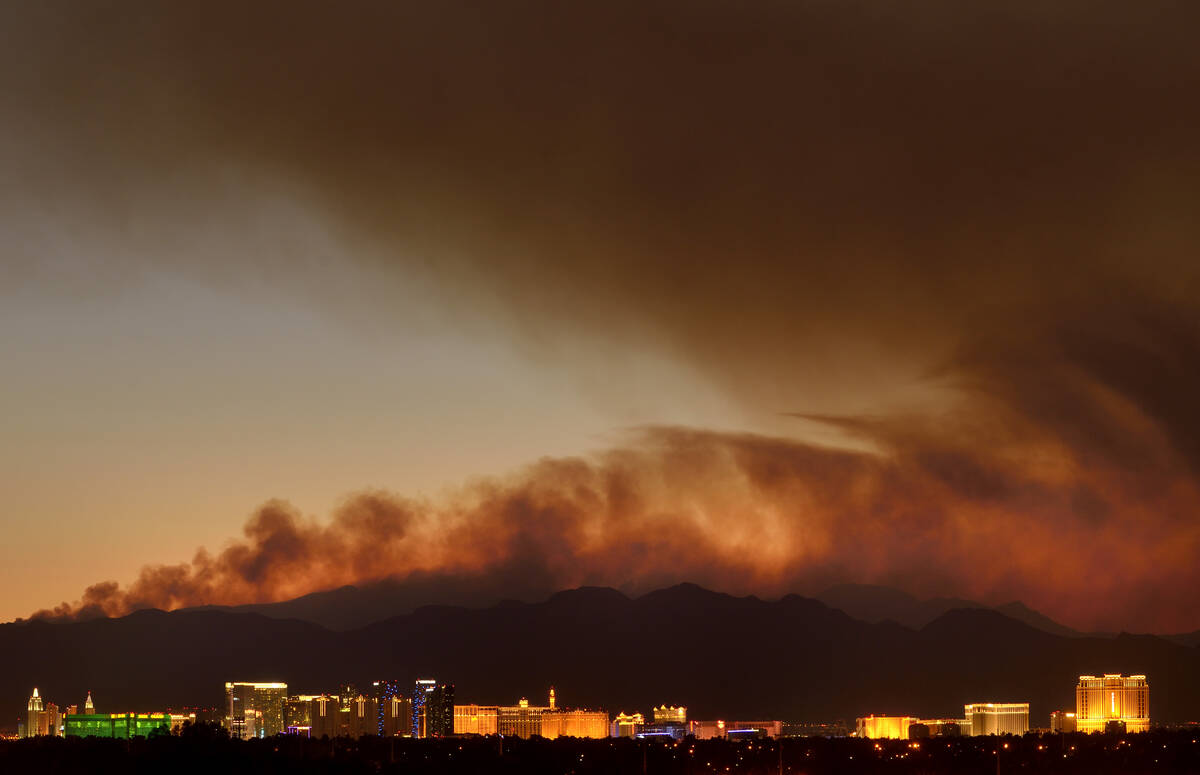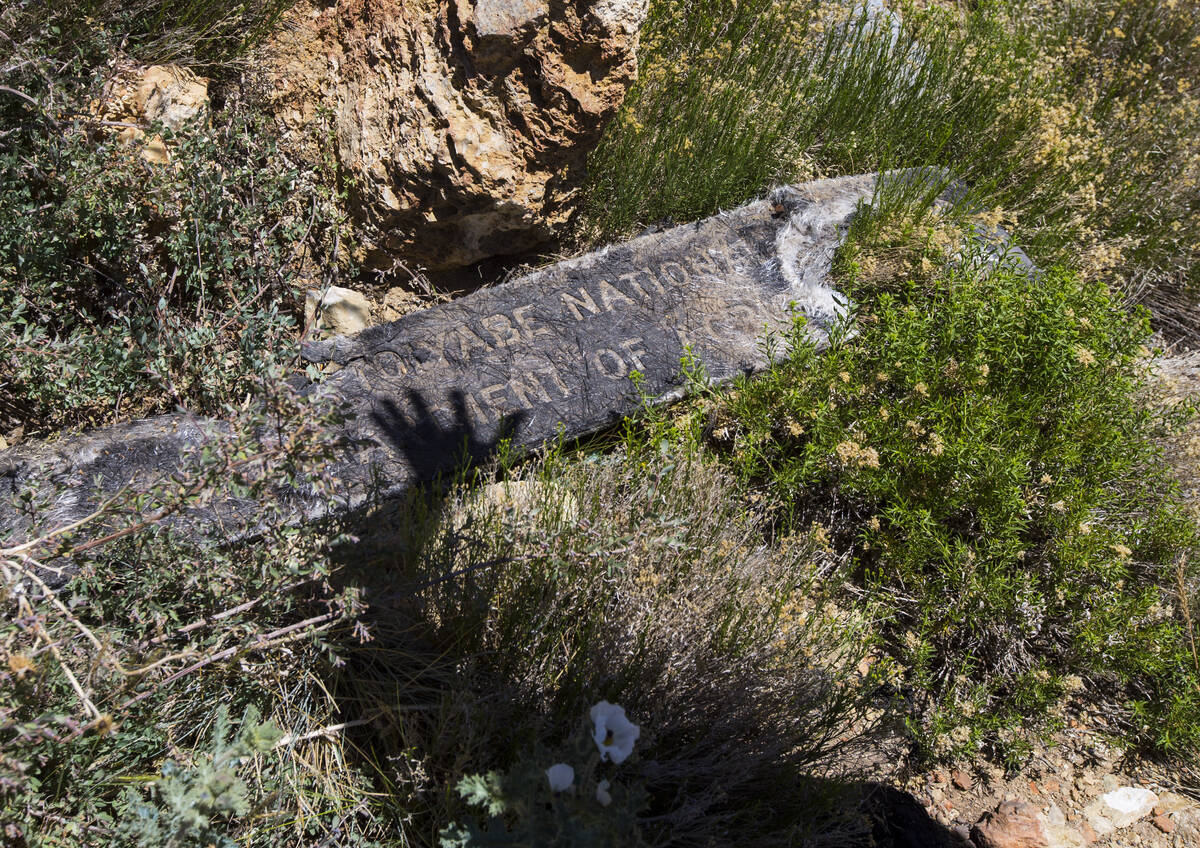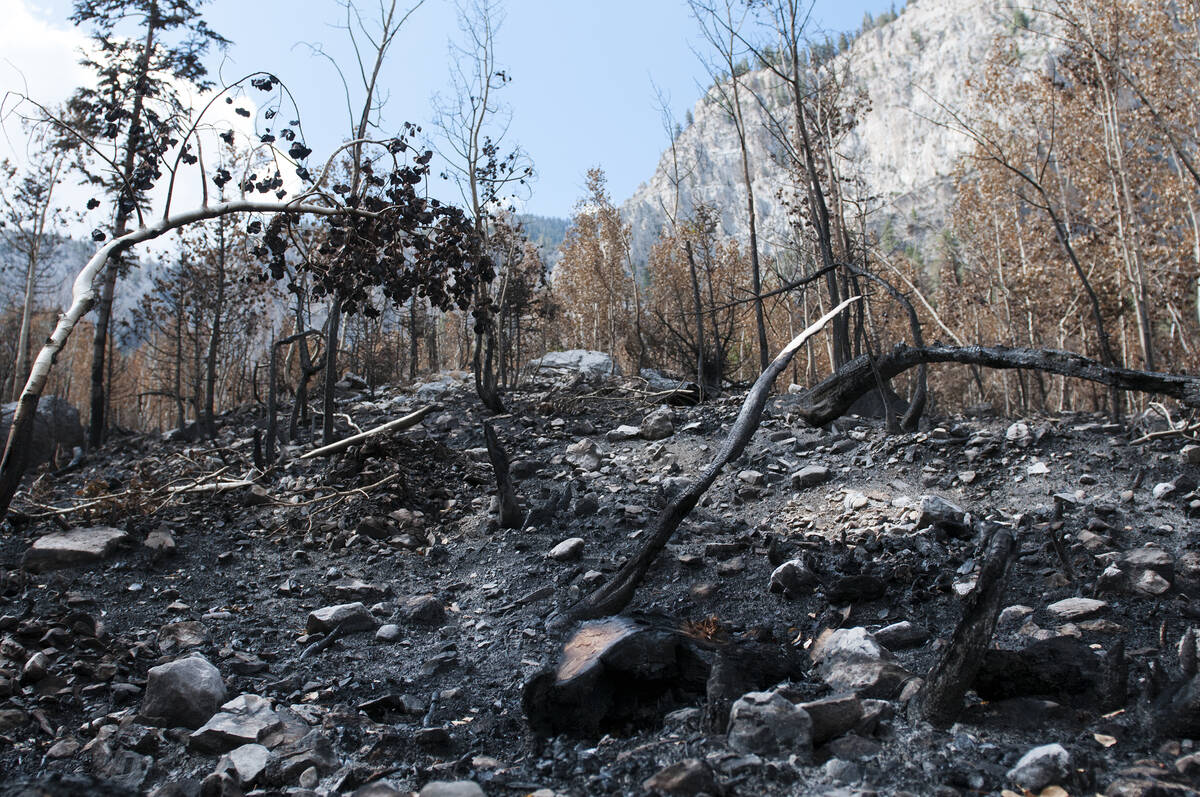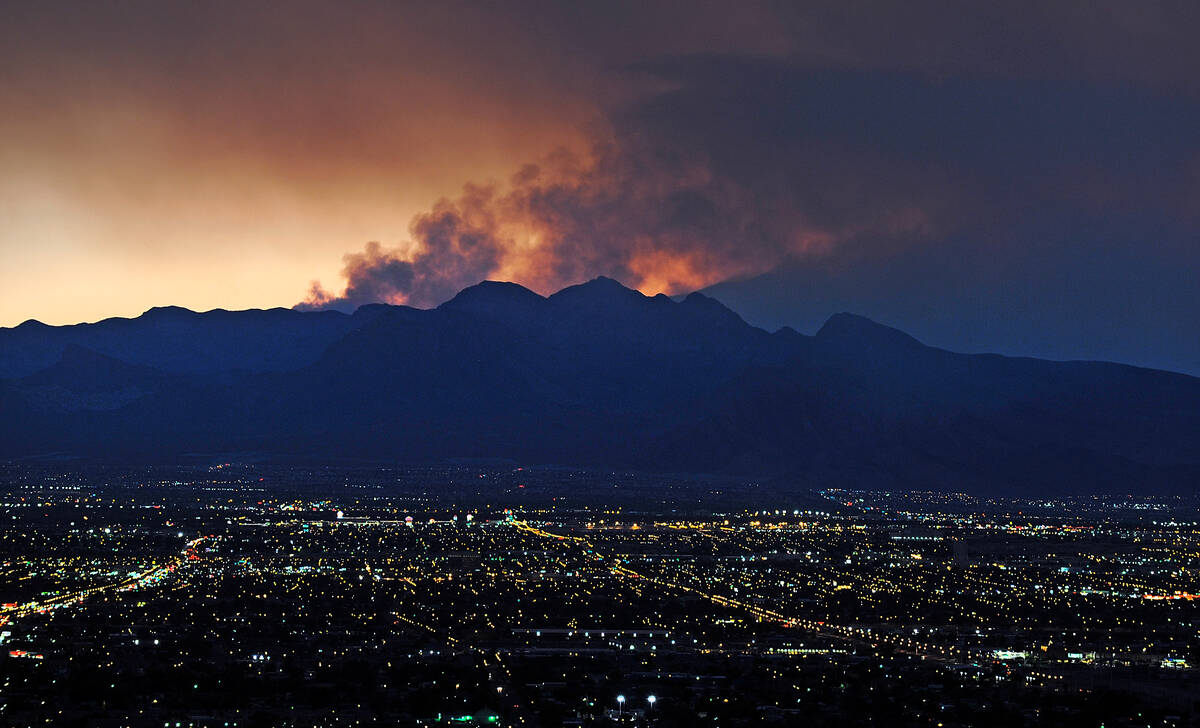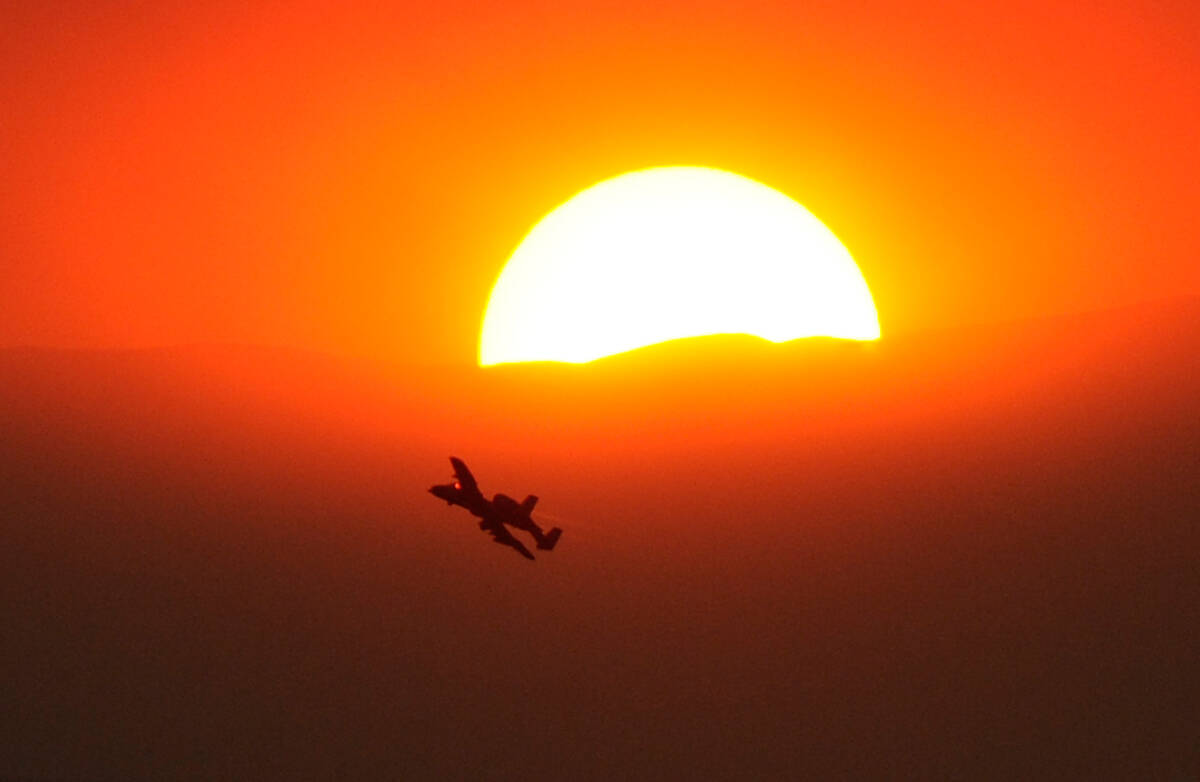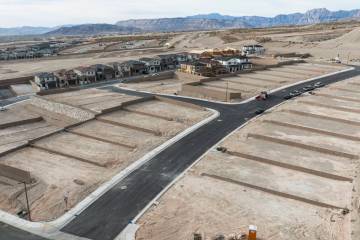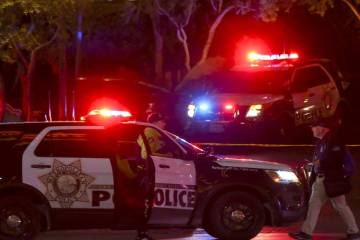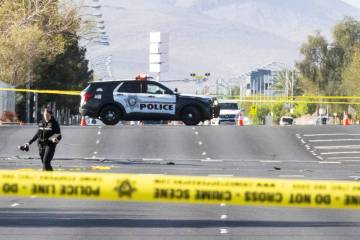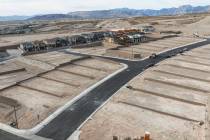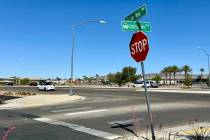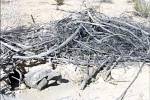Looking back on one of Mount Charleston’s largest fires, 10 years later
Saturday marked 10 years since the Carpenter 1 fire consumed nearly 28,000 acres near Mount Charleston, but the land has seen recovery after devastating fire burned trees and grasses across the Spring Mountains.
Ray Johnson, fire prevention officer with the U.S. Forest Service, said new white fir trees and Ponderosa pine have grown about 6 to 10 inches tall in previously scorched areas. Aspen trees, which thrive after disturbances such as wildfires, have also grown quickly, but it will take hundreds of years for the trees to reach the heights of some of the larger trees found in the higher elevation areas.
Some habitats are taking longer to reestablish. Grassy meadows where the endangered Mount Charleston Blue Butterfly live are still slow to recover. Lower elevation areas are drier, which makes plant growth slower than higher elevation areas that can better retain moisture, he said.
But, the unseasonably wet winter was kind to the recreation area. Rain and snow have resulted in great wildflower blooms where butterflies thrive, Johnson said.
“When I drive on Deer Creek Road, I look out, and I can just see giant fields down about 3 or 4 miles of yellow, which are different kinds of flowers that they have down there,” he said. “It’s really pretty.”
The beauty of the area today is a far cry from the land’s devastation in 2013.
Looking back at Carpenter 1
The fire began on July 1, 2013, after a lightning strike on a weekend where Southern Nevada saw three consecutive days of 117-degree temperatures and hot winds, creating extreme burning conditions.
Hardship struck the greater firefighting community even before the Carpenter 1 fire began when 19 members of the Granite Mountain Hotshots crew died while battling the Yarnell Hill Fire in Arizona on June 30, 2013.
Johnson said the tragedy weighed on everyone’s mind while fighting Carpenter.
“You could just tell it was affecting them,” Johnson said. “Everyone was a bit somber. I think it made the managers a little bit more cautious.”
Ron Bollier, the state fire management officer for the Nevada Division of Forestry who worked as fire management officer for the forest service during Carpenter 1, said firefighters at Mount Charleston thought twice about how they implemented tactics to stop the inferno that was the No. 1 priority fire in the country at the time.
“From my experiences in my 42 years, (the Yarnell fire) validated what I know and what I learned and what not to do,” Bollier said. ”It just validated all our rules, guidelines, firefighting orders to not break them.”
In the fire’s early days, he said, the fire was hampered by fire-spreading grass on the top and bottom of the blaze as it went sideways across the slopes. This abnormal fire pattern made it difficult for firefighters to treat Carpenter from a safe area that was previously burned.
No homes lost in fire
Eventually, the fire reached Trout and Kyle canyons where areas had been previously treated by fuel reduction projects that removed plants and timber which could further the fire’s spread, Bollier said.
Johnson noted there were areas where flames could have reached 100 to 200 feet tall but didn’t because they hit treated areas.
“That really contributed to the outcome where we didn’t lose any homes up here (in Kyle Canyon),” Johnson said.
Although the fire devastated the land, residential areas were primarily damaged by monsoon flooding that hit the area for several weeks following the height of the fire and left U.S. Highway 95, and even as far south as State Route 160 to Pahrump, closed, Johnson said.
“There was nothing to hold the water, and the mountains are steep,” Johnson recalled. “It was taking all the topsoil, anything that was left up there, and that’s what came into town. It was like a black, thick kind of mud, it was a lot of soil. It wasn’t just water. It brought down everything that was on the hillsides, and it had a lot of velocity because the mountains are so steep.
“The fire was terrible, and we lost a lot of trees and everything that lives on the hillsides, but the flooding did more damage to the residents.”
The fire was contained on Aug. 18, 2013, and lasted eight weeks, according to the National Weather Service.
Fire safety, 10 years later
Bollier said the Forest Service, along with other agencies such as the state’s Division of Forestry, have continued to work together on fuel reduction projects to keep the people recreating and living in the Spring Mountains safe from future wildfires.
However, getting funds for fuel reduction projects can be difficult. The division has worked with counties to help them apply for federal fuel reduction grants such as the Western States Fire Management Grant so that those lines of protection can continue to exist, he said.
“We strive every day to try and get the counties to take care of their communities with fuel reduction projects, because it’s not a matter if, it’s just when,” Bollier said.
Johnson said he hopes people thinking back to the Carpenter 1 fire will remind them of the importance of fire safety while recreating on the mountain.
“People have to be careful; they have to be smart. Otherwise, things like this can happen in the future.”
Contact Taylor Lane at tlane@reviewjournal.com. Follow @tmflane on Twitter.



